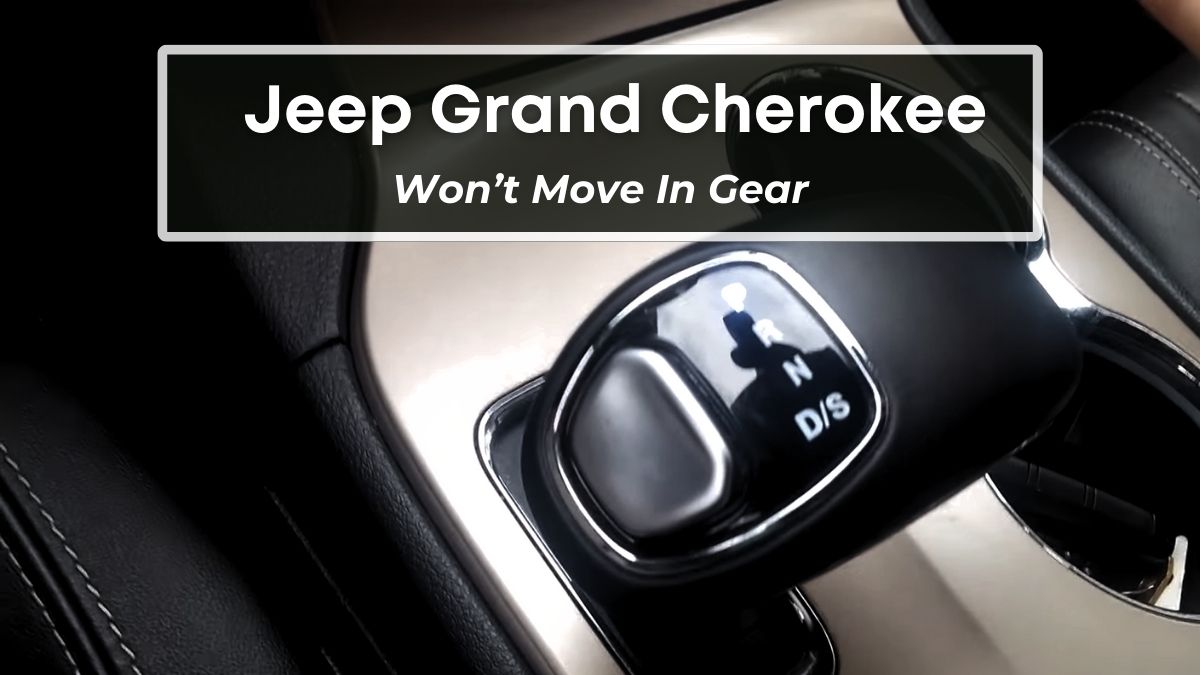Short Answer
There can be several reasons why your Jeep Grand Cherokee won’t move in gear. These include low/dirty transmission fluid, damaged/misaligned transmission linkage, malfunctioning transmission solenoid, faulty TCM, etc.
Although the Jeep Grand Cherokee is a reliable SUV, many owners have reported different transmission-related problems in recent years.
The most common among those is the one where the Grand Cherokee goes into gear but won’t move.
In many cases, this problem occurs suddenly, leaving you frustrated and concerned.
In this post, we’ll talk about the major reasons why it happens and how you can fix it.
7 Reasons Why Jeep Grand Cherokee Won’t Move in Gear
1. Low/Dirty Transmission Fluid
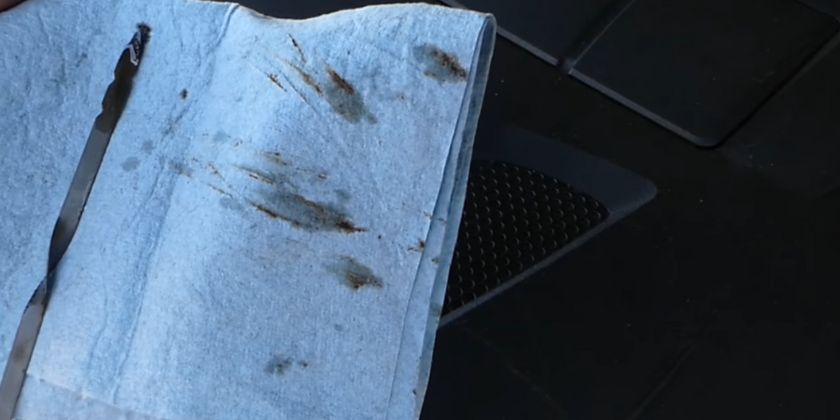
While mainly used to lubricate the internal moving parts of the transmission system, the transmission fluid also acts as a coolant (to reduce the risk of transmission overheating) and provides hydraulic pressure to engage and disengage gears.
The last point is crucial because the fluid level can get low due to leakages and overheating, resulting in lesser hydraulic pressure and the inability to engage gears and clutch.
Sometimes, the transmission fluid doesn’t get low but rather gets dirty due to aging, debris, or other contaminations. This dirty fluid can clog the transmission filter, resulting in a restrictive flow and inadequate hydraulic pressure.
The result is the same: your vehicle doesn’t move while in gear.
As the low/dirty transmission fluid cannot cool down the transmission temperature, you may also get the ‘transmission over temp’ warning message on your instrument cluster panel.
To check whether our Grand Cherokee has this issue, we’ll have to examine the transmission fluid.
Here’s what you need to do:
- Start your vehicle and run it in the idle state for a few minutes
- Locate the transmission dipstick, pull it out of the tube, and wipe it clean with a piece of cloth.
- Reinsert the dipstick fully into the tube before pulling it out again.
- Check the fluid level. The dipstick will have different markings on it, indicating the fluid level. If the fluid level is below the ‘min’ mark, add more fluid until it crosses it.
- Another thing you’ll need to check is the fluid color. The fluid is clean if it’s reddish or pinkish. So you’ll only need to add more fluid.
- But if it looks dark and has a burning smell, it’s dirty, and you’ll need to drain it out before adding the new transmission fluid.
2. Malfunctioning Transmission Solenoid
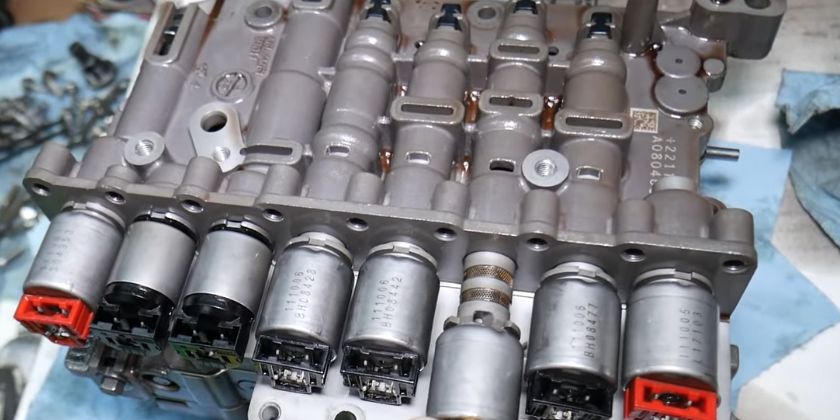
If the transmission fluid turns out to be new and sufficient, it’s time to check the transmission solenoids.
Also known as shift solenoids, these switches control transmission valves to regulate the flow of transmission fluid to engage and disengage different gears.
Therefore, if a transmission solenoid malfunctions, it won’t be able to engage (and disengage) its respective gear due to a lack of hydraulic pressure. You’ll be stuck in the current gear, and the vehicle might not move.
If your vehicle works fine initially but struggles while going into higher gears (from 2nd to 3rd, for example), a transmission solenoid is probably the main culprit.
Other shift solenoid-related problems include rough shifting, limp mode activation, and the ‘check engine’ warning light on your dash screen.
To confirm whether a transmission solenoid is working or not, you’ll have to test it with a multimeter.
Check out the video below for more information.
3. Malfunctioning Transmission Valve Body
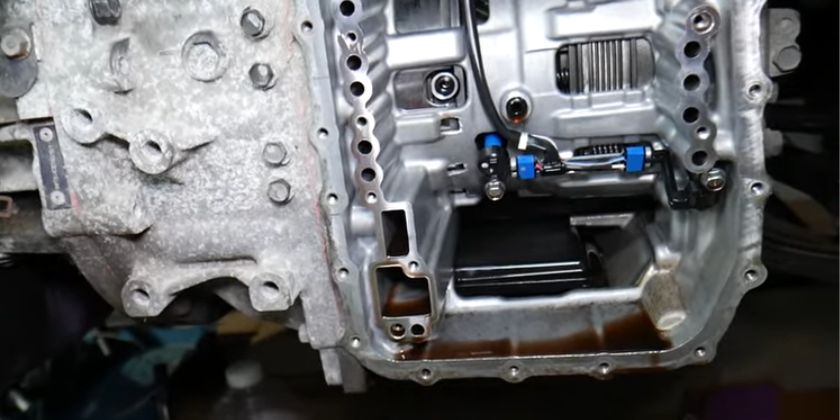
Once you’re sure about the transmission solenoid, it’s time to check the transmission valve body.
It’s a component that houses various valves that regulate the flow and pressure of transmission fluid.
The passages in the valve body can block over time, primarily due to aging internal components and contaminated/overheated transmission fluid, resulting in insufficient hydraulic pressure and a failure in engaging gears.
To fix this issue, you’ll need to hire a mechanic.
They’ll either clean its internal components to remove any debris, varnish, contamination, etc., or replace the valve, spring, seal, and solenoids if they’re damaged.
4. Damaged Transmission Linkage
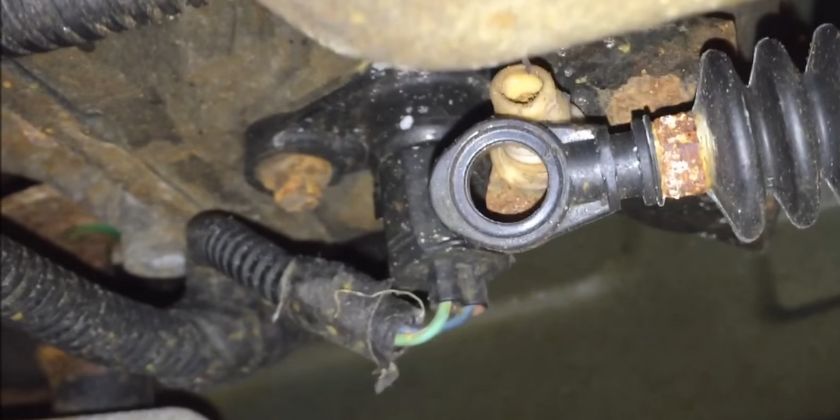
A damaged transmission linkage can be another reason for a Jeep Grand Cherokee not to move.
It’s a component that connects the gear shifter to the transmission system and consists of different series of rods, cables, and levers.
These rods and cables can get damaged over time, preventing the driver’s input from the gear shifter from converting into the appropriate transmission action.
As a result, you find difficulty in engaging gears or selecting transmission modes, and the vehicle doesn’t move.
On other occasions, the transmission linkage is not damaged but gets loose or misaligned. The result is similar, however, as the power from the engine doesn’t transfer to the wheels, causing the vehicle to remain stationary.
As for the fix, you’ll need to adjust the linkage components or replace damaged parts.
5. Bad Torque Converter
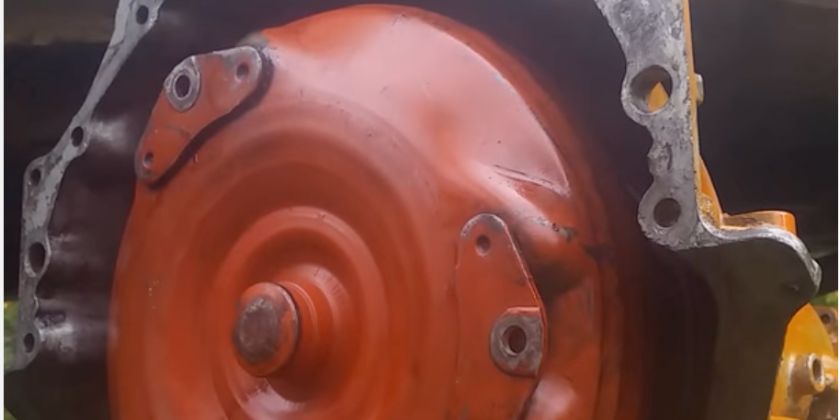
The torque converter replaces the duty of a clutch in an automatic transmission vehicle.
Located between the engine and the transmission, it transmits the torque from the former to the latter.
Therefore, if this converter fails to engage properly (due to internal fluid leaks or a failing torque converter clutch), the power will not transfer to the wheels, and the vehicle won’t move.
Common signs of a malfunctioning torque converter include contaminated transmission fluid, transmission overheating, and shuddering/vibrating when the vehicle is accelerating.
As it’s too complex for DIY, you’ll need a professional mechanic to fix this issue.
In most cases, they’ll repair the torque converter clutch as it’s the most common root cause behind this problem.
However, if the torque converter is severely damaged, the entire unit will need to be replaced.
6. Misaligned Transmission Gears
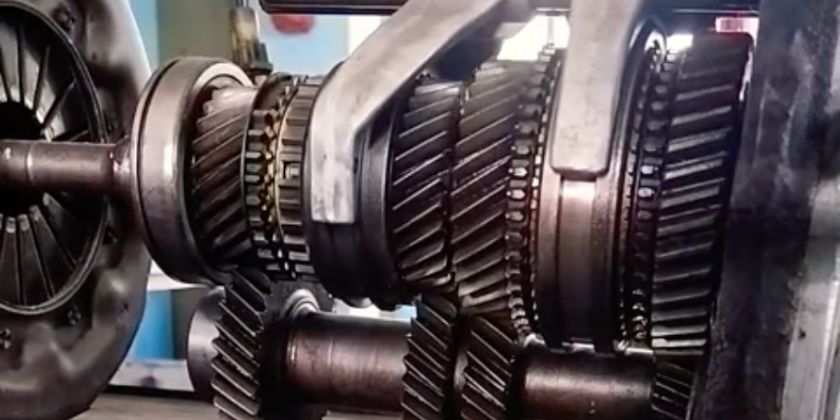
If the gears in a transmission are not aligned with each other (mainly due to worn/damaged teeth), they may not engage properly.
This results in a loss of power, which can potentially cause your vehicle not to move despite being in gear.
Other signs of misaligned gears include grinding noises and vibrations during gear shifts, gears slipping, and reduced acceleration.
7. Faulty TCM
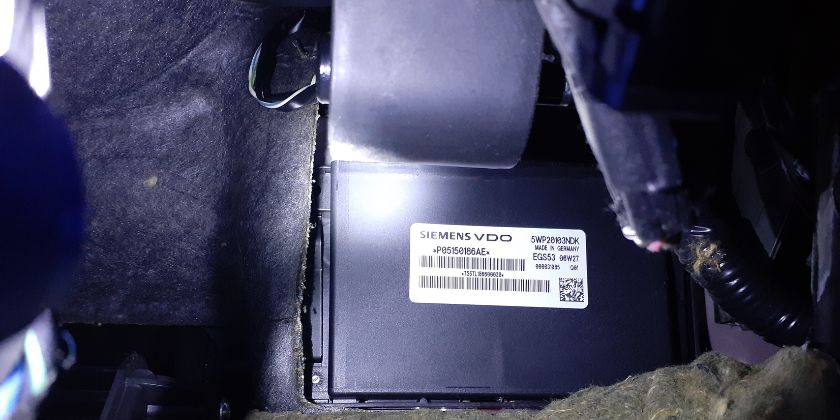
If you’ve inspected all the above components, and they work fine, you probably have a faulty TCM (Transmission Control Module).
Although rare, the TCM can malfunction for various reasons, such as aging or loose/corroded connections, a faulty TPS sensor, physical damage, etc.
Since it handles all the functions related to the automatic transmission, a malfunctioning TCM can cause different issues in your vehicle, including its ability to move while in gear.
To find out whether that’s indeed the case, pull out the TCU fuse from the power distribution box or temporarily unplug the TCM wiring harness.
If it shifts to the 1st/2nd gear like normal and moves, the TCM is probably faulty.
Jeep Grand Cherokee Transmission Reset
Many new Grand Cherokees come with transmission adaptive learning.
This feature allows the TCM to analyze different factors, such as driver input, engine performance, environmental conditions, etc., and optimize the transmission’s shifting patterns based on those factors.
But if you’re giving the wrong inputs to the TCM (due to any of the issues we discussed above), it will make poor adjustments, resulting in incorrect shift points, hard/abrupt shifts, delayed engagement, etc.
Therefore, once you’ve fixed the transmission issues, it’s important to reset the transmission adaptation – so that the previous data can be cleared and TCM can relearn the sifting patterns from scratch.
Here’s the basic overview of this process:
- Park your Jeep and turn off the engine.
- Locate the battery and disconnect its negative battery terminal with a wrench.
- Keep the terminal disconnected for 10-15 minutes.
- While it’s not necessary, you can also pull out the TCM fuse for a few minutes before putting it back again.
- Reconnect the negative battery terminal and secure it tightly.
In most cases, this procedure will reset the transmission in your Jeep Grand Cherokee.
If it doesn’t, I suggest hiring a mechanic to do a hard reset (as opposed to a soft reset we just did) using an OBDII scanner.
This video will give you a rough idea about it.
Conclusion
So these were some causes and solutions for your Jeep Grand Cherokee that’s not moving while in gear.
To prevent this issue from occurring again, you can take different measures, such as:
- Changing the transmission fluid every 30,000 miles or three years.
- Avoiding towing heavy loads for extended periods.
- Protecting the shift solenoids from moisture, dirt, and corrosion.
- Using gentle force when shifting ( to prevent breaking or misaligning the transmission linkage).
But if you already have this problem, you’ll probably need to consult a certified professional mechanic.
That’s because the transmission system is too complex for DIY.
So, unless your problem can be fixed by changing the transmission fluid, it’s better to leave it to the professionals.
Frequently Asked Questions
Why is my Jeep Grand Cherokee Not Changing Gears?
Low transmission fluid, dirty transmission filter, loose/misaligned transmission linkage, or wrong clutch pads are the main reasons behind the Jeep Grand Cherokee having difficulty changing or not changing gears.
What Sensors Can Cause Limp Mode?
There are many sensors, such as the MAF sensor, engine coolant temperature sensor, throttle position sensor, O2 sensor, etc., that can malfunction and cause the limp mode to activate.
Do Jeep Grand Cherokees Have Transmission Problems?
Over the past few years, many Grand Cherokee owners have reported several transmission-related issues in their vehicles, such as rough shifting and delays in gear engagement (2014-15), shuddering or vibrating during acceleration (2011-13), and transmission overheating (2005-10).
How Much Does it Cost to Fix a Transmission on a Jeep Grand Cherokee?
It depends on the extent of the damage, the Grand Cherokee trim level and year, and the labor costs.
For example, if you only need to refill/replace the transmission fluid, it can cost between $100 and $250.
But if there’s any hardware damage that requires you to replace a transmission component or get a new transmission altogether, the total cost can range from $1000-$3000 (single component fix) to $3000-$6000 (new transmission).
How Do I Know if the Transmission is Going Bad in My Jeep?
There are many signs that indicate a failing transmission system. These include delayed engagement, rough shifting, knocking sounds while accelerating/decelerating quickly, burning odor, or the check engine/transmission over temp warning lights.

